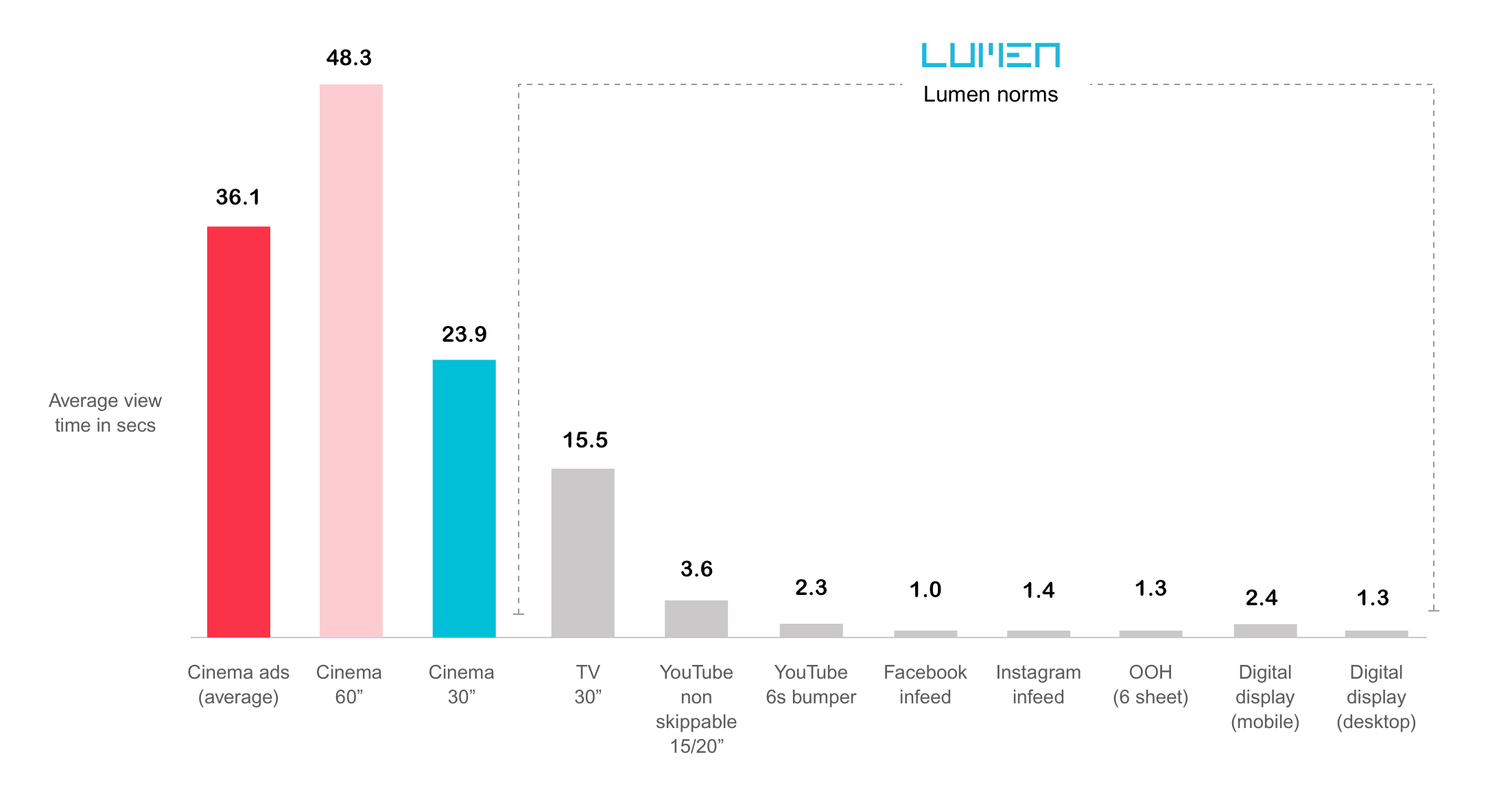Centre of Attention
Centre of Attention is the fifth edition of DCM’s industry-leading Building Box Office Brands series. Created in partnership with industry-leading specialists Lumen, the study explores the level of attention paid to ads in the cinema, how this compares to other AV formats & the value of this attention on brand metrics.
Introduction
The topic of attention in media has become increasingly prevalent in the advertising industry.
Brands are looking to find more effective ways to understand the comparative quality of different media environments and the impact of those exposures. The benefit of attention metrics is that it can act as a valuable unifying measure across both online and offline channels, so advertisers are able to define the brands impact beyond basic viewability metrics.
Based on just viewability standards alone we could assign the same value to both of these Specsavers ads. As these ads currently appear, in cinema this brand ad could be classed as 100% viewable and online this MPU could also be classed 100% viewable.
“Viewable” vs Viewed
100% Viewable

95% Viewed
100% Viewable

15% Viewed
By measuring attention and overlaying this data however we can highlight that there is a significant difference between these exposures. A viewable ad in cinema is expected to be viewed by 95% of people in the room, whereas an MPU on desktop is only expected to be viewed by 15% of people.
Being viewable and viewed can drive significant uplifts on brand KPIs so understanding what attention looks like in cinema – and its impact on brand metrics – was the key focus for this project.
Methodology & Metrics
Respondents (aged 16-34, mix of gender, SEG and cinemagoing frequency) were recruited to watch a showing of The Batman at Vue Westfield.
On arrival they were given video glasses that would recorded everything they were looking at. Following the film, they were asked to answer a short questionnaire to assess recall.
Lumen analysts coded each individual second of video footage to detail whether the screen was in-view and the ad was being viewed, and then were able to generate various attention metrics to understand how many ads were viewed, for how long, and using its databank from previous studies how cinema compares to exposure in other AV formats.
The positive brand impact of high-attention cinema
While understanding and measuring attention is important, its also vital to understand the potential impact of attention on brand outcomes.
Since 2015 DCM has been working with Differentology to measure the effectiveness of cinema advertising for brands, and have now built up a databank of 54 campaigns (from across 18 product categories) that can be tapped into to understand the impact that a high-attention view in cinema can have as part of the wider AV mix.
Comparing the results of those exposed to the cinema ad vs. those not exposed to the ad in cinema we can see that cinema delivers significant uplifts across important metrics including recall, awareness, brand perceptions, consideration and intention to act:
+17%
Ad awareness
+19%
Brand perception statements
+16%
Consideration
+50%
Recall
+25%
Better brand impression
+23%
Intention to act
Base: 54 campaigns, uplifts between those exposed to the ad in cinema vs those not exposed in cinema (Demographically matched groups). Top 3 agree scores reported for perceptions, consideration and brand impression.
Summary
At a time of increased distraction among audiences and AV planning challenges, Cinema provides brands with a high-attention solution.
Attention paid to advertising in cinema is significantly higher than other AV channels including TV, social, OOH and display. Cinema’s ability to engage young audiences means they watch most of your ad and this ultimately drives recall and positive impact on other key brand outcomes.





